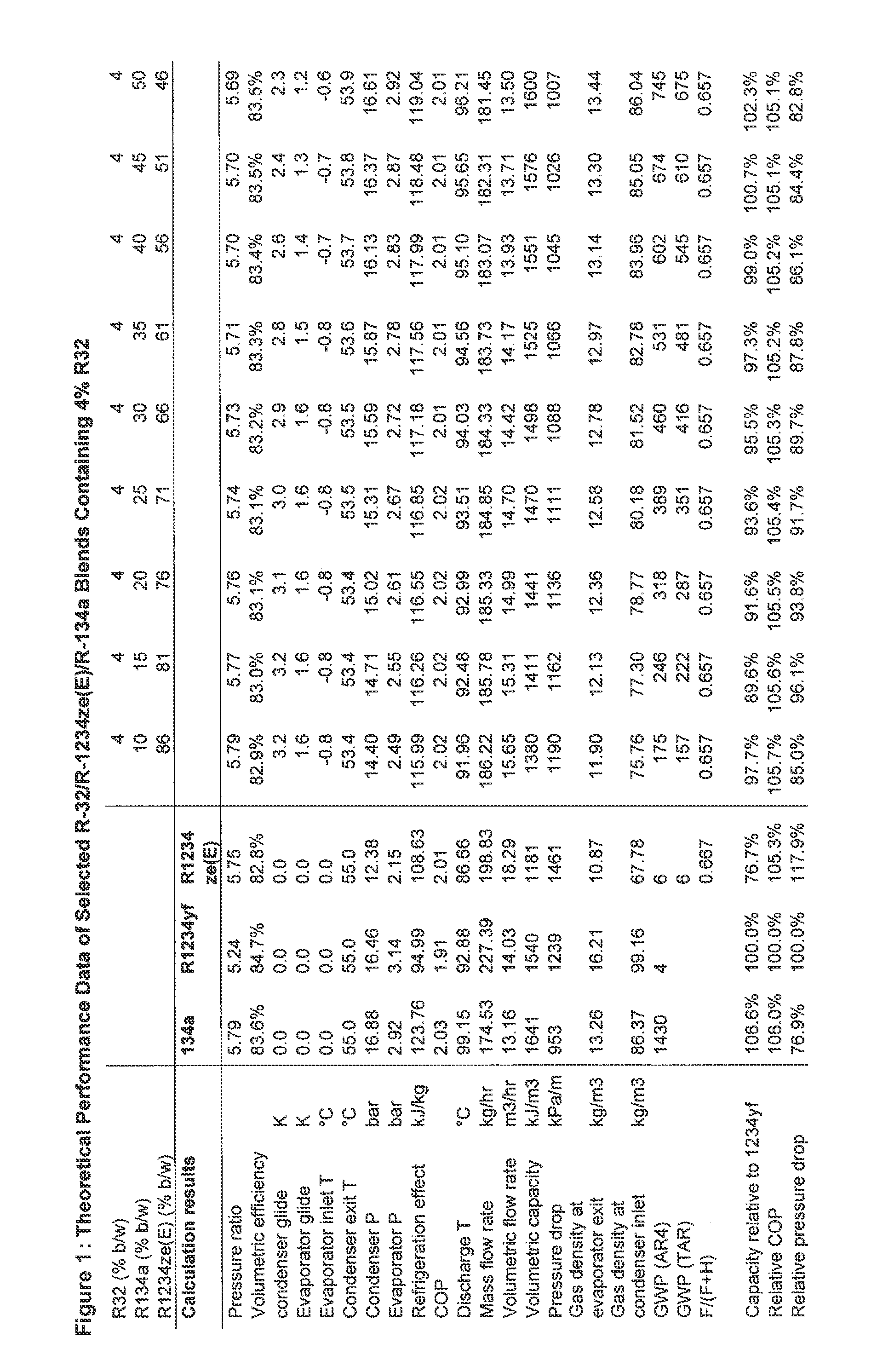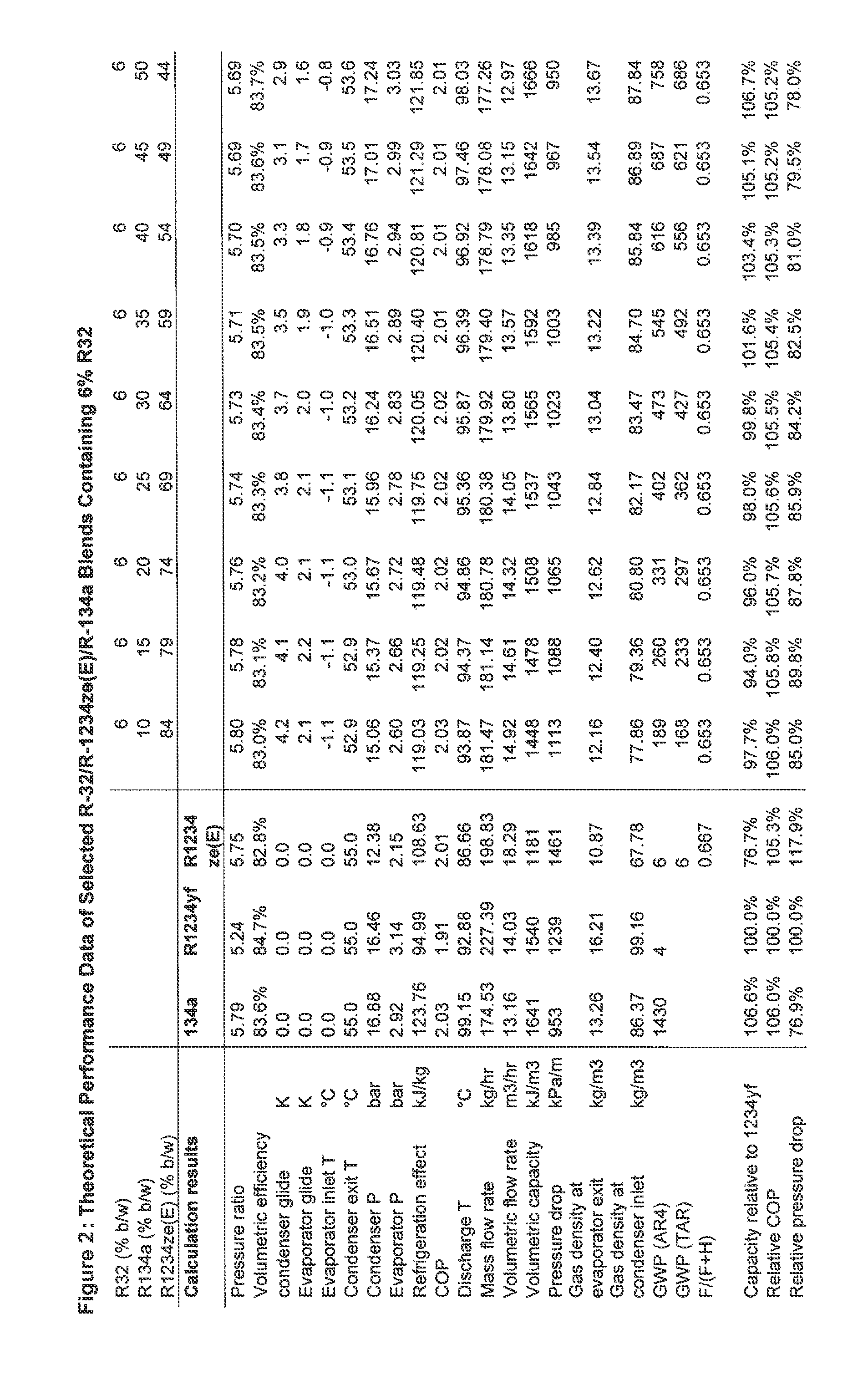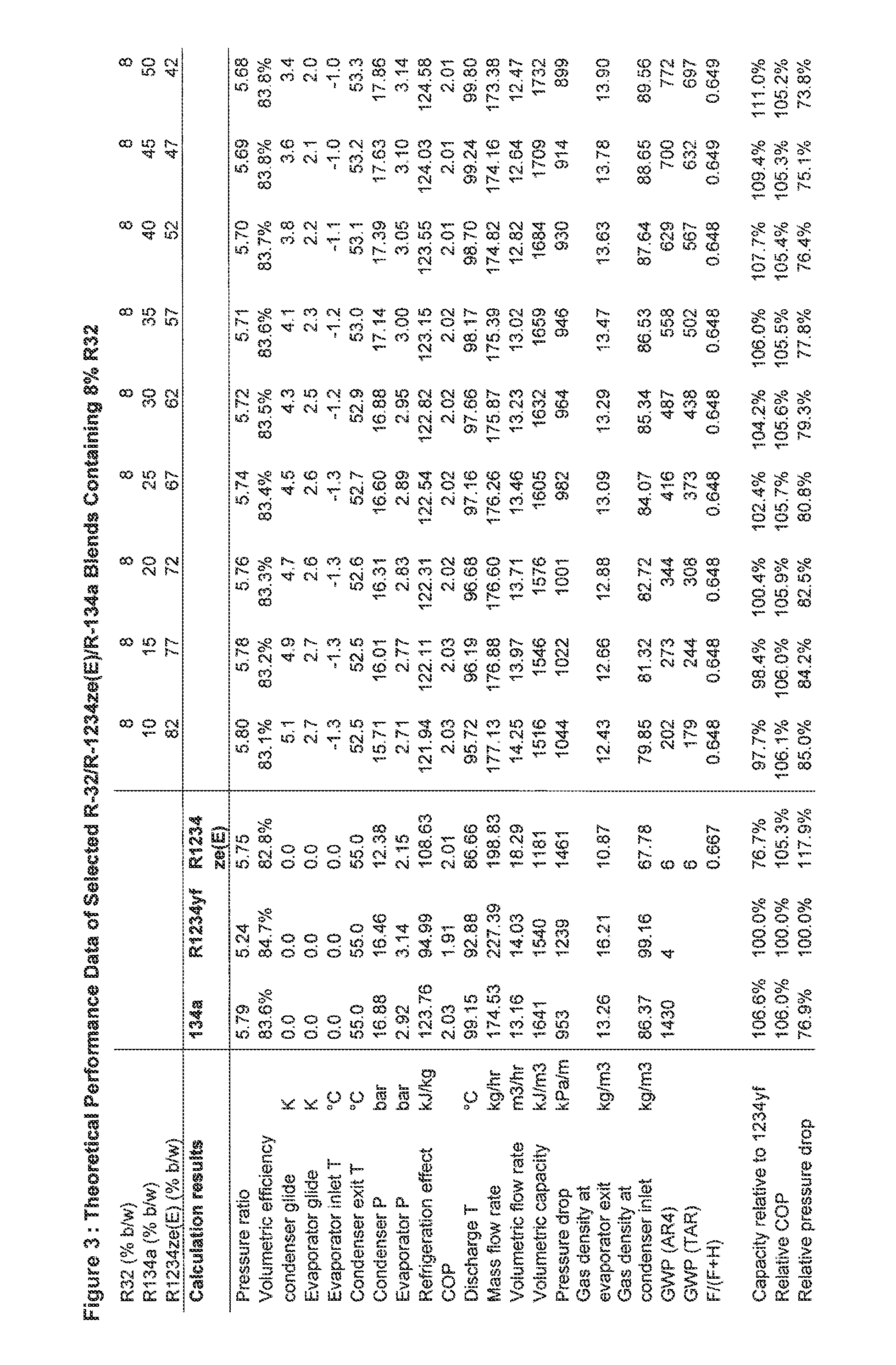Heat transfer compositions
a technology of compositions and heat, applied in the field of heat transfer compositions, can solve the problems of excessive flammability of r-152a, and reduced flammability of r-152a
- Summary
- Abstract
- Description
- Claims
- Application Information
AI Technical Summary
Benefits of technology
Problems solved by technology
Method used
Image
Examples
examples
Performance of a R-32 / R-134a / R-1234ze Blend
[0106]An instrumented laboratory chiller was used to evaluate the performance of a ternary blend of R-32 / R-134a / R-1234ze(E) (7% / 46% / 47% weight basis) over a range of evaporating and condensing temperatures. The chiller used a fixed displacement reciprocating compressor with polyolester (POE) lubricant and cooled glycol in a counter-current flow heat exchanger against evaporating refrigerant. The refrigerant was condensed in a counter-current flow heat exchanger using cooling water. The comparative tests were run at fixed compressor displacement and the flowrates of heat transfer fluids were controlled to maintain a constant and equal bubblepoint of refrigerant in the condenser, and a constant evaporator inlet temperature of refrigerant. The performance was evaluated at condenser bubblepoint temperatures of 30° C. and 40° C. and over a range of evaporator inlet temperatures from −35° C. to +5° C.
[0107]Data are reproduced below for the measur...
PUM
| Property | Measurement | Unit |
|---|---|---|
| temperature glide | aaaaa | aaaaa |
| discharge temperature | aaaaa | aaaaa |
| GWP | aaaaa | aaaaa |
Abstract
Description
Claims
Application Information
 Login to View More
Login to View More - R&D
- Intellectual Property
- Life Sciences
- Materials
- Tech Scout
- Unparalleled Data Quality
- Higher Quality Content
- 60% Fewer Hallucinations
Browse by: Latest US Patents, China's latest patents, Technical Efficacy Thesaurus, Application Domain, Technology Topic, Popular Technical Reports.
© 2025 PatSnap. All rights reserved.Legal|Privacy policy|Modern Slavery Act Transparency Statement|Sitemap|About US| Contact US: help@patsnap.com



